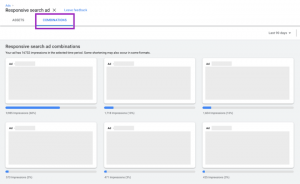It’s been almost 20 years since the first official Cyber Monday. What was once just a popular shopping day the Monday after Thanksgiving is now one of the most important e-commerce days for the entire retail sector. In fact, last year’s Cyber Monday was the biggest online shopping day of all time, with U.S. consumers spending $11.3 billion, according to Adobe Analytics. That stat is a microcosm of the shopping revolution that we’ve all witnessed over the last 20 years: Online is an undeniable, vital element to shopping and consumer behavior. However, no matter how far we’ve come in the last two decades, we must not forget one key thing: digital shopping will always be better when humans are involved.
Regardless of whether a consumer begins their research online or in-store, there is a comfort and convenience of knowing that someone—in-person or virtual—is available to answer questions at every step. This is a win-win situation: retailers can understand how to best serve current and future customers and those customers are able to truly personalize and customize their shopping experience. I believe that this enhances the experience and is a significant contributor to growth. In fact, data insights company Kantar expects overall U.S. retail sales to grow about 4.5% to $3.7 trillion by 2027, with online expected to grow 10.1% in the same timeframe. Kantar expects to see an even split by 2027 between physical store sales and online sales.
That data suggests that customers want a “choose your own adventure” type of shopping experience, with multiple ways to search, shop and purchase items through a variety of seamlessly connected digital channels. It also highlights, however, the staying power of a brick-and-mortar shopping experience.
Case in point, recent Signet research shows that 78% of in-store purchasers use digital channels, many starting their journey online—proof that online shoppers still desire a human connection and want to interact across touch points. They want to touch and feel the merchandise, or they want to ask questions of an associate virtually or in a store to get a better understanding of the product, alongside the research that they’ve begun online.
Customers build relationships with businesses that know them, which adds to the human element. This is why personalization in digital is a key focus right now across industries. I like to look at it as “Connected Commerce,” which combines different types of customer experiences across in-store, online and mobile, and taps into offerings like “buy online pick-up in-store.” Connected Commerce enables customers to shop however, whenever, and wherever they want.
See, for example, how the jumping off point of a customer’s shopping journey has expanded beyond the traditional choice of online or in-store and now includes SMS, WhatsApp, or a social platform. The interaction between customer and retailer is tailored and personalized—and the human connection can shine through those popular SMS and WhatsApp interactions.
Channels aside, the future of shopping will undoubtedly include even more personalization. In a 2022 Salesforce study, 73% of respondents expect companies to understand their unique needs and expectations, and more than half think companies should go as far as anticipating them.
So what happens when you remove the human element? Here’s one example. If you aren’t familiar, Amazon recently launched a ‘just walk out’ shopping experience. Customers can walk into a physical Amazon Go store, pick up an item and walk out without needing to check out or speak to a cashier utilizing technology like computer vision and deep learning. In this case, customers swap conversation with convenience and removes all opportunities for personalization. How does this experience reach the 73% of people who want companies to understand their unique needs and expectations?
For many retailers, the best way to reach customers still involves a human element. Digital experiences should be a tool, not a replacement.
Rebecca Wooters is the chief digital officer at Signet Jewelers.
(7)
Report Post





